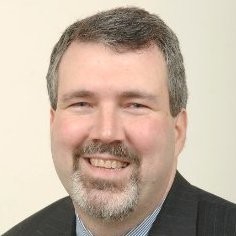Economics of Clean Energy: Path to 100 | video interview
Wind and solar developers and installers are currently working in a challenging environment. Dr. David Loomis, who provided the analysis for the Path to 100 legislation, one of the clean energy bills guiding Illinois’ energy transition, recently spoke with The Solar Podcast about the economics of solar and wind and the need to offer incentives to drive distributed generation (DG) forward in the Midwest.
What could legislation like the Path to 100 mean for Illinois?
David says the Path to 100 legislation, with some sweeping clean energy bills being considered in Illinois, is like a cherry on top to the broad benefits he identifies in multiple economic studies on Midwest wind and solar farms. Included is the just released Consumer and Climate First Act, part of Illinois Governor Pritzker’s commitment to get to 100% RPS (Renewable Portfolio Standards) by 2050.
“There are tremendous economic development aspects to the Path to 100 legislation,” Dave told Solar Podcast host Tim Montague. “According to my (conservative) analysis, we’d see over 53,000 jobs created or supported during construction . . . and although sometimes criticized as one-time jobs, people move from one-time jobs to the next.” An additional 3,200 long-term jobs he says would be supported annually, an important boost to local economies.
“Keep in mind these jobs are typically located in rural communities, where there are declines in population,” adds Dave, co-founder of the Center for Renewable Energy at Illinois State University, and president of Strategic Economic Research here: https://www.pathto100.net/
Read Loomis’ full report here.
“This helps farmers stay on their land because it’s guaranteed income. If they lease their land to a solar developer or a wind developer, that plant’s going to keep running for 30 years. If they’re farming, they’re at the mercy of the climate, with good years and bad years.”
“Owners of power plants are replacing gas and coal plants with wind, solar and storage because the economics are just better, a better ROI to their investors,” adds Tim. “But at the local scale for consumers and business owners, for us to have distributed generation, we still need incentives.”
Translating legislation into real world results
“When we did the analysis of Path 100, we included not just the utility scale wind and solar, but all of the distributed generation.” They meshed two respected economic impact models. “Here’s the investment that’s being made, here are the multipliers, what industry segments get affected.” Then, how many jobs are produced, what are the earnings? And what’s the economic output?
“We’re putting about $200 million into the economy and incentives. And it’s going to come back to us, that’s the beauty of these incentives, there’s always a multiplier. So you get more than a dollar out when you put a dollar in – in net economic benefit,” says Dave. “You get additional benefits that flow out to the community . . . the wind and solar projects are going to enhance the property tax base . . . and the largest beneficiary in terms of property taxes is local school districts . . . then the county, the township, the road district, the libraries, the parks district all get a piece of that.” All this in addition to the land lease payments for farmers and other landowners.
“If you looked at number of jobs created per megawatt, the lowest would be on utility scale projects,” he adds. “From an economic impact, jobs per megawatt, you’re really sliding higher on the distributed generation side,” i.e., a solar array, a battery in your garage. “So I think we’re going to need both to grow.”
Listen to the full interview at Solar Podcast, where Dave Loomis and host Tim Montague discuss the power of resiliency, the hidden economic benefit layers associated with labor, the supply chain, consumer spending and more. Sponsored by Continental Energy Solutions.
Dr. David G. Loomis is a Professor of Economics at Illinois State University, Executive Director of the Institute for Regulatory Policy Studies and Co-Founder of the Center for Renewable Energy. He has over 20 years of experience in energy analysis and has performed economic development analyses at the county, region, state and national levels for many different energy projects and associated supply chains.
In particular, he has performed economic impact analyses for renewable energy projects in Illinois, Iowa, Kansas, Michigan, Nebraska, New Mexico, New York, Ohio, Pennsylvania, and South Dakota. He has served as a consultant for Apex, Clean Line Energy Partners, EDF Renewables, EO.N, Geronimo Energy, Invenergy, J-Power, the National Renewable Energy Laboratories, Ranger Power, State of Illinois, Tradewind, and others. He has testified before the Illinois Senate Energy and Environment Committee, the Illinois Commerce Commission, the Missouri Public Service Commission, New Mexico Public Regulation Commission and numerous County Boards. Dr. Loomis is a widely recognized expert and has been quoted in the Wall Street Journal, Forbes Magazine, Associated Press, and Chicago Tribune as well as appearing on CNN.
Dr. Loomis has published over 30 peer-reviewed articles in leading energy policy and economics journals. He has raised and managed over $8 million in grant and contracts from government, corporate and foundation sources. Dr. Loomis received his Ph.D. in economics from Temple University in 1995.
Strategic Economic Research, LLC also contracts with other experts as dictated by the project. Dr. Adrienne Ohler, Associate Professor of Economics and Dr. J. Lon Carlson, Associate Professor Emeritus have consulted on projects in the past.

Amazing blog, thanks for sharing with us. I really like the topic which you have chosen to share about the insights that much relatable with Renewable Energy Solutions. I always keen to explore about “Clean Energy” that’s why I recently jump into “ClearPath.Energy” that helped me to get more informative stuff regarding the same.
Keep sharing & posting!